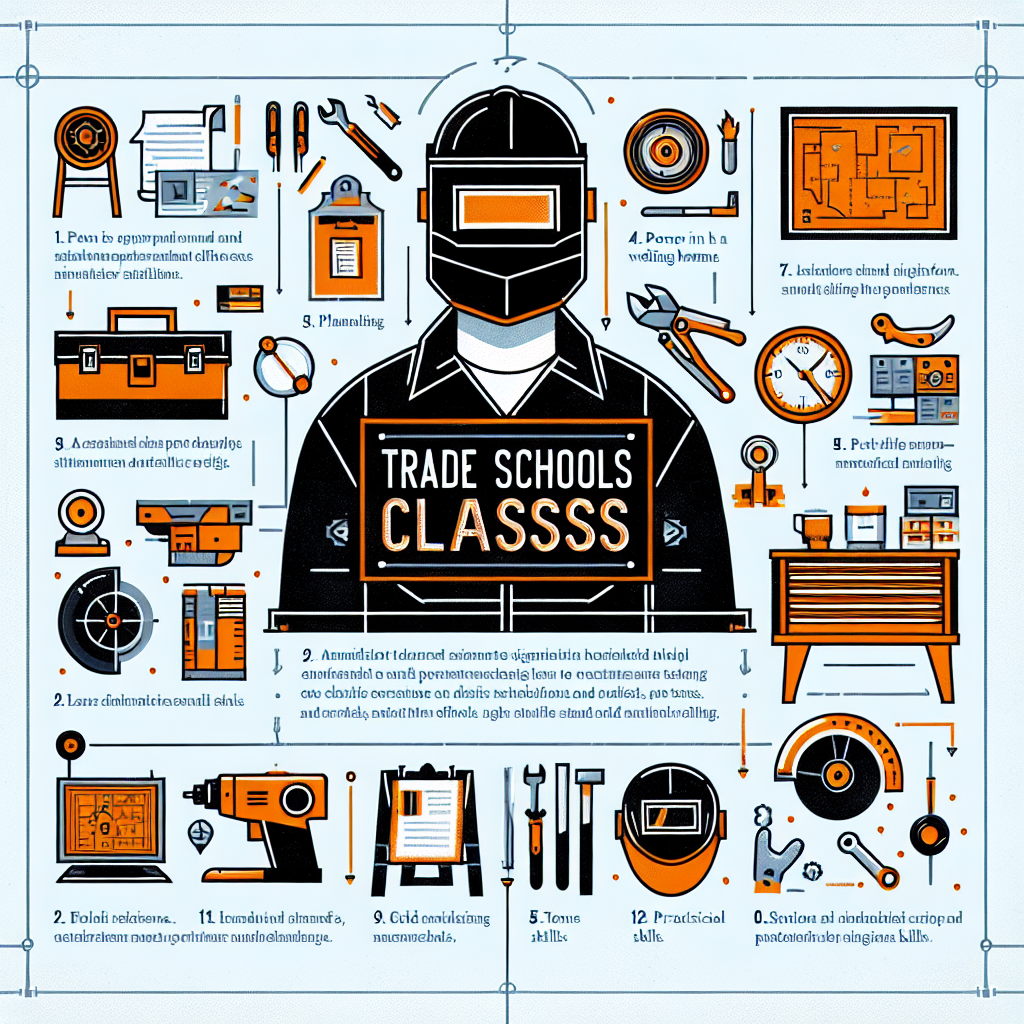Trade schools often fly under the radar, but they’re practical, fast-paced, and tailored to career readiness. 10 Things You Didn’t Know About Trade Schools Classes will open your eyes to how modern vocational programs work, who benefits, and why hands-on learning is increasingly valued by employers. Whether you’re exploring a new path, advising someone else, or returning to study later in life, these insights will help you make informed choices.
Ten Surprising Facts About Trade School Courses
Trade school courses differ from traditional college classes in many ways — schedule, assessment style, and workplace alignment are just a few. Below are little-known features that can change how you view technical training.
1. Classes are built around real tools and real environments
Many programs use industry-standard equipment in class, not textbook-only simulations. That means students graduate with familiarity in the same machines, software, or diagnostic tools they’ll use on the job.
2. Assessment is often competency-based
Instead of relying only on exams, trade classes commonly assess whether a student can perform specific tasks to a standard. This skills-focused testing helps employers trust a graduate’s capability immediately.
3. Shorter program length, quicker credentials
A certificate or diploma from a trade program can take months rather than years, enabling faster entry or re-entry into the workforce. Accelerated tracks and stackable credentials are common.
4. Strong employer partnerships
Many programs are co-designed with local businesses and unions. That alignment means curricula change with industry needs and students often gain direct pipelines to internships, apprenticeships, and jobs.
5. Flexible scheduling for working learners
Nights, weekends, and modular classes allow students who work or have family responsibilities to continue training without quitting other parts of their lives.
6. Lab time often exceeds lecture time
Hands-on practice is prioritized. A typical week may include far more workshop or lab hours than classroom lectures, reflecting the emphasis on doing over memorizing.
7. Soft skills are intentionally taught
Communication, teamwork, punctuality, and workplace problem-solving are embedded into training because technical competence alone is rarely enough to thrive in a job site or service role.
8. Financial aid and employer tuition support are available
Trade programs qualify for a range of funding options, from federal aid to employer-sponsored tuition assistance. Investigate grants, scholarships, and apprenticeships that pay while you learn.
9. Programs are increasingly industry-recognized
Many trade schools partner with certifying bodies, so graduates can sit for recognized exams and earn credentials that travel across states and employers.
10. Ideal for career changers at any age
Shorter timelines, practical outcomes, and strong job placement make trade classes particularly attractive for people switching careers or seeking stable, well-paid roles later in life. If you’re considering a midlife change, read resources like the starting fresh — new career paths for women at 50 guide for perspective and planning tips tailored to older learners.
Why this matters: skills, speed, and employability
Trade programs are not “lesser” alternatives; they are different paths optimized for practical job readiness. They cater to learners who prefer applied instruction and want to enter or advance in the labor market quickly. Employers often value the hands-on, task-oriented expertise that trade school graduates bring.
- Fast credentialing: complete a marketable program in months.
- Job-focused training: align learning with employer needs.
- Affordable options: many pathways cost less than a four-year degree.
Further reading
For a broader context on vocational education systems and how they fit into national skill strategies, see this overview of vocational education which summarizes historical, international, and policy perspectives.
Quick FAQs
Q: Can trade school graduates earn the same wages as college grads?
A: Many do, especially in fields with strong demand (electricians, HVAC technicians, dental hygienists, web developers). Earning potential depends on occupation, location, certifications, and experience.
Q: Are trade classes only for young students?
A: No. Trade programs are designed for learners of all ages, including adults changing careers, people re-entering the workforce, and those seeking to upskill quickly.
Q: How do I choose a reputable trade program?
A: Look for accreditation, employer partnerships, job placement rates, industry certifications offered, and recent alumni outcomes. Visiting labs and talking to instructors and current students can also give practical insight.



